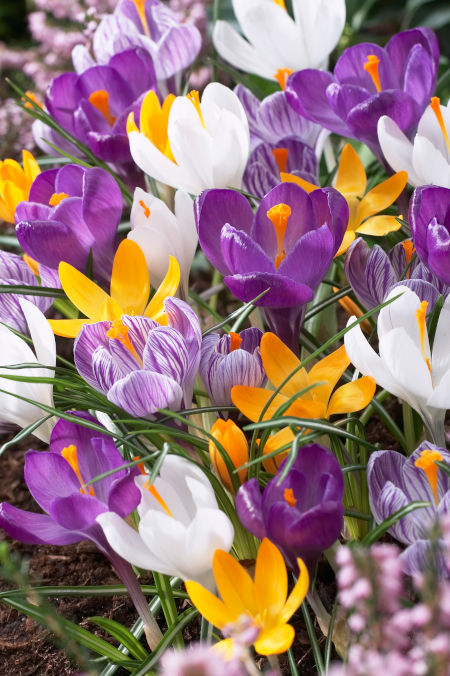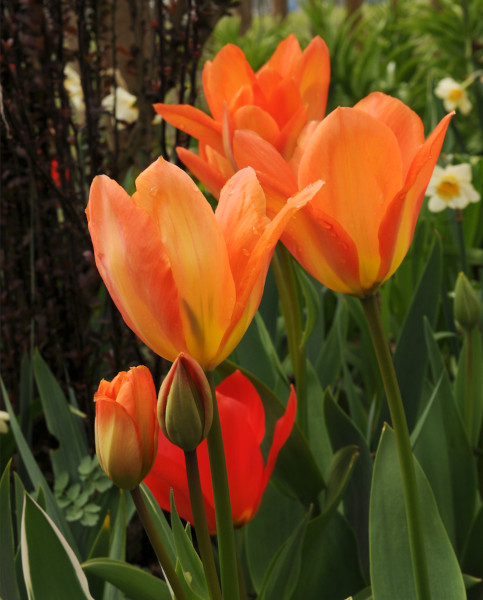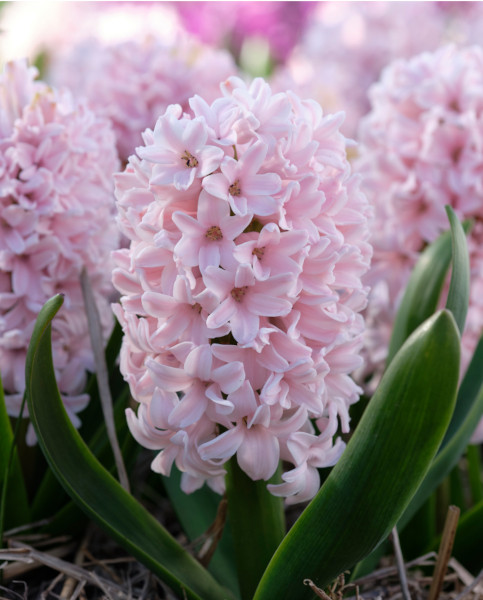How to grow Crocus
Symbolising joy, hope and new beginnings, Crocus bring a welcome splash of colour early in the season in containers, borders or naturalised in grass.
Adored by early waking bees and pollinators, for a much-needed nectar rich feast. Thin, green foliage appears in early spring below goblet-shaped blooms.
A collection of pots full of Crocus looks wonderful on a garden table where their intricate markings and colours can be appreciated up close.
Try one of our delightful Crocus collections, carefully selected for their complimentary colour combinations, all featuring the distinctive set of glowing orange stamens for which Crocus are so famous.

Key Information
Soil pH
Position
Hardiness


Where & when to plant Crocus
Crocuses are perennial plants which grow from corms - these are similar to bulbs in that they are a mass of storage tissue but are firmer and look a little bit like a large hazelnut.
Plant your Crocus in autumn, in a sunny spot or light shade. Crocuses thrive in full sun where their star-like blooms open fully on a bright day to bask in the warm rays.
A pot full of blooming Crocus in the garden is a spring treat. Use peat-free compost with a couple of handfuls of horticultural grit to assist drainage and make sure you choose a pot which has holes in the base. A container which is wide and shallow is perfect for cramming lots of Crocus in and will sit well in the centre of your garden table.
How to plant Crocus
Scatter the corms in a random pattern and plant where they land to a depth of 8-10cm and the same distance apart to allow naturalisation. If on clay, add a handful of grit. Cover with soil, water in, and then look forward to a beautiful show.
A pot of Crocus is a spring treat. Use peat-free compost and make sure your pot has drainage holes. Plant your corms almost touching, as above and cover over with 1-2cm of compost, followed by a layer of grit to help to retain moisture, keep weeds at bay, and deter slugs. Water regularly if dry.

What to plant with Crocus
Crocus grown in a pot look simply fabulous on their own, or can form the pretty, early, lower storey of a bulb lasagne. This is a method of growing layers of bulbs to bloom in succession and takes a little planning. As a rule, the later flowering, and larger bulbs such as Tulips and Narcissi should be planted in the bottom of the pot, and smaller bulbs or corms such as Iris reticulata and Crocus planted as the final layer, to bloom first.
If planting in a mixed border, Crocus should be placed at the front, perhaps with other low growing bulbs such as Snowdrops. Be careful not to overshadow Crocus with larger spring plants such as Tulips, Hyacinths, Fritillaria and Narcissi and place these bulbs nearer to the middle or back of the bed or border.
If you have room in your garden to allow Crocus to naturalise, then swathes, rings or carpets of these colourful flowers look spectacular, and early pollinators such as bumblebees will be found happily buzzing from bloom to bloom in the sunshine.
At Hayloft, we are more than happy to help if you would like any further advice or planting ideas for your Crocus. Please contact our friendly and knowledgeable Customer Care Team.



How to care for Crocus
If you have planted Crocus amongst grass, remember where you planted them and not to cut the grass until after they have flowered and died back.
There is no need to deadhead the blooms unless you wish to tidy up your flowering display. Allow the foliage to turn yellow and die back naturally to ensure the plants have had the maximum time to photosynthesise and store energy ready for a repeat display next year.
Crocus corms can be a tasty treat for hungry squirrels and mice. To ensure yours are not dug up and pilfered, make sure you plant them deeply in open ground and consider covering pots over with netting or chicken wire.
Crocus require no real maintenance once established - there is no requirement to feed, mulch, or water your plants unless you are growing them in a pot – ensure you keep these watered well throughout dry periods.
How to propagate Crocus
Crocus corms will multiply naturally beneath the soil, and every few years the clumps should be dug up and separated into smaller sections which you can replant or share with friends and family. You should do this after flowering, and once the foliage has faded.
If you are planting your divisions straight away, dig fresh planting holes and add some leaf-mould and grit as before, or have pots full of multipurpose compost with added grit ready to pop the corms into.
Using a garden fork, dig around your Crocus and lift the whole clump from the ground. Carefully separate it into smaller sections, each containing several corms.
Plant the divisions into their new spaces or pots, fill around the edges with earth. Firm in gently and water the soil.




